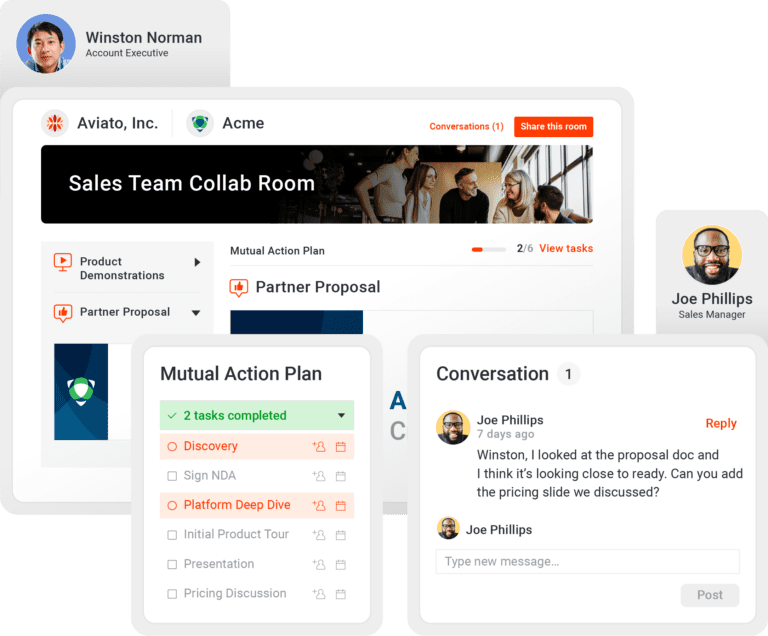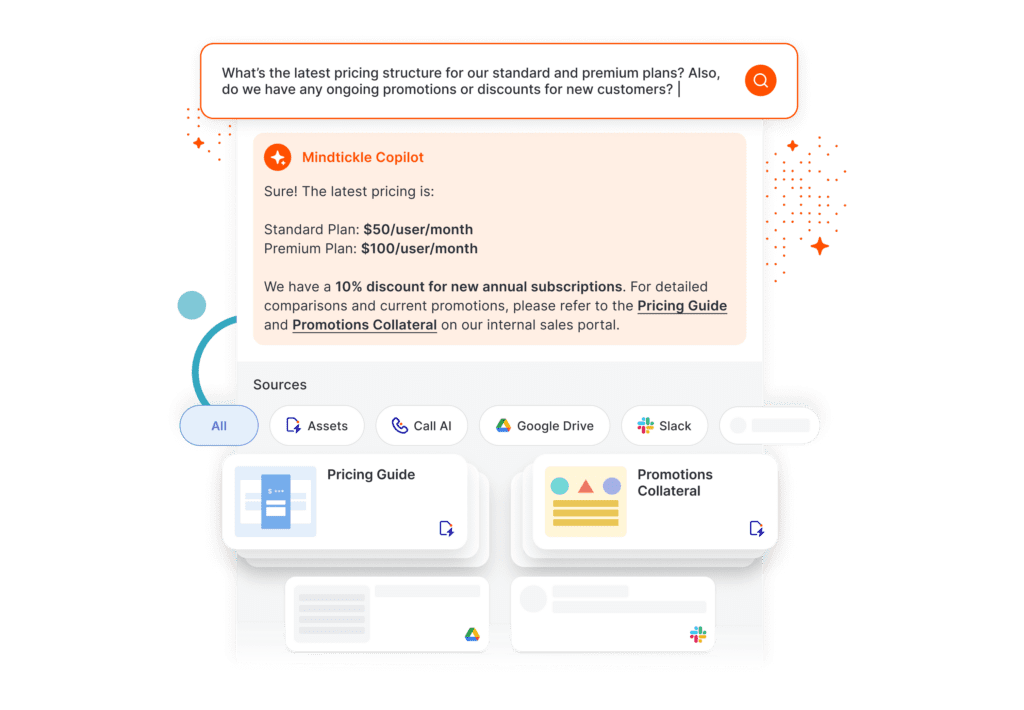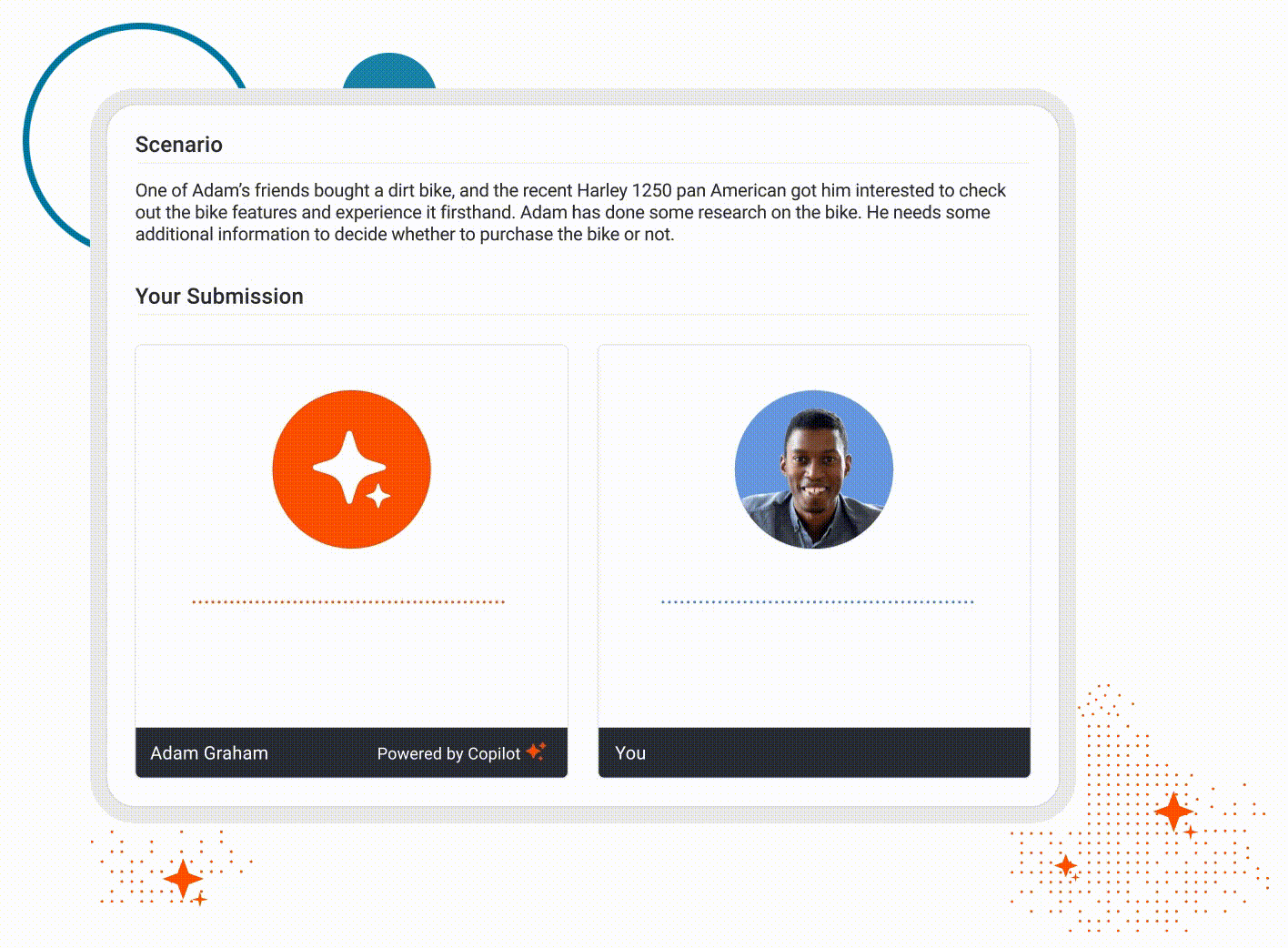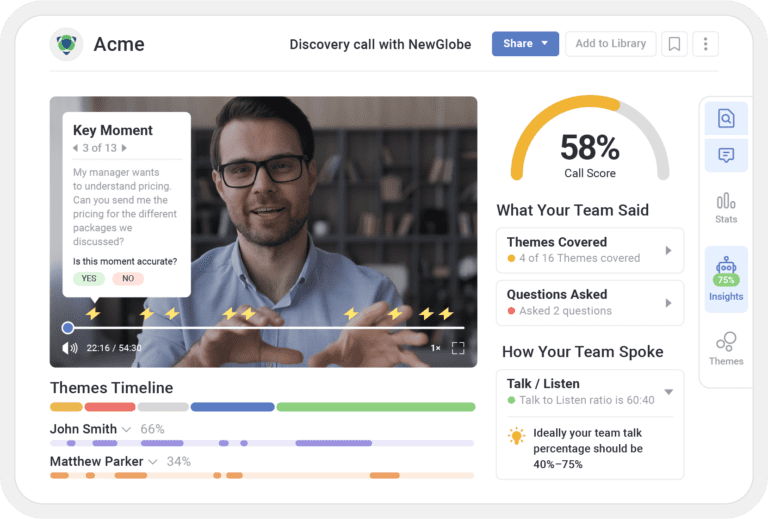You’ve spent weeks (or even months) getting to know a prospect, understanding their pain points, and presenting a solution to help them overcome their challenges. Along the way, you’ve answered all of their most pressing questions. Now, all that’s left to do is close the deal.
Sales closing is a critical part of the sales journey. But often, it’s easier said than done.
Fortunately, sales closing skills can be taught. By using proven sales closing techniques and adopting best practices, you can win more business and reach your sales quota every quarter.
Read on to explore what sales closing is, why it’s important, and which sales closing techniques and best practices to keep at the ready.
What is sales closing, and why is it important?
Sales closing is the process of finalizing (or closing) the sales cycle. In other words, it’s the process of getting your prospect to (finally) say “yes” to your offer so you can officially call it a done deal.
Why does sales closing matter?
It’s a critical step in the sales cycle. If you don’t close a sale, you won’t earn a customer or hit your sales quota, and your previous efforts in engaging the customer throughout the sales cycle will be in vain.
The bottom line is that when some team sellers haven’t mastered the art of closing a sale, quota attainment will suffer.
Though closing a sale sounds simple enough, it often isn’t. Research tells us the average close rate for B2B businesses sits around 30%. Furthermore, over a third of sellers say that closing is the most difficult part of their job.
The average close rate for B2B businesses is
All sellers – from beginners to veterans – can face challenges when closing a sale.
Revenue organizations must ensure their sellers have the skills and competencies needed to successfully close more deals. It’s imperative to provide the right sales training and enablement to ensure your teams have what it takes to close deals. AI-powered role plays can also help your sellers practice their sales closing skills as much as necessary before money is on the line.
10 winning sales closing techniques
There’s not just one way to close a deal. And there’s not a single sales closing script that works for every situation, every time.
Instead, there are a variety of sales closing techniques. Each has its unique style and can be effective in different sales scenarios.
Let’s look at 10 of top sellers’ best closing strategies.
Sales closing technique #1: The assumptive close
What is it: When a seller employs the assumptive sales closing technique, they confidently discuss next steps – for example, implementation or delivery – while assuming it’s a done deal. This approach can be particularly effective for veteran sellers who are well versed on whether a buyer is a good fit and truly ready to move forward.
Why does it work: When the seller is confident in their assumption that the deal will close, the client may go right along with it and agree to the deal.
Example: “It looks like our team has time for an implementation kick off call next Thursday. Or, is there a day that works better with your schedule?”
Sales closing technique #2: The “try before you buy” close
What is it: In this sales closing strategy, the seller offers the buyer an opportunity to try the product out before making a purchase. Often, this involves a free trial period. This sales closing technique is often called the “puppy dog close.”
Why does it work: Making a purchase involves risk. A free trial gives prospects a risk-free way to try out your solution. Once they see the impact firsthand, they’re more likely to move forward with a purchase.
Example: “I understand you still have reservations. What if I allowed you to try out our solution for free for two weeks? That way, you can see firsthand how it works with your other technologies and drives productivity gains/time savings.”
Sales closing technique #3: The opportunity cost close
What is it: Failure to take action has consequences. This sales closing technique is focused on conveying what a buyer has to lose by not purchasing your solution.
Why does it work: This technique helps buyers understand the risk of not moving forward with your company. It creates a sense of urgency, which may help you accelerate the sales cycle and close the deal.
Example: “I know you said your team spends a lot of time on [pain point], costing your company a lot of money. Moving forward with this solution will solve that problem and save you money. Are you ready to take the next step?”
Sales closing technique #4: The “now or never” close
What is it: This sales closing technique creates a sense of urgency so buyers are more likely to act – now. Like the opportunity cost close, this technique can create urgency by conveying the cost of not taking action. Or, sellers may offer buyers a special deal that’s only available if the buyer acts now.
Why does it work: All people can experience a fear of missing out (AKA FOMO). B2B buyers are no exception. When you create a sense of urgency by leveraging a limited time deal or communicating the cost of not taking action, they may be more willing to take prompt action.
Example: “I should mention that we’re offering a special deal right now. New customers who sign up during the month of November receive a 10% discount. We don’t run deals like this often. I don’t want you to miss out!”
Sales closing technique #5: The sharp angle close
What is it: This sales closing technique is all about addressing a prospect’s question or objection with another question that moves the deal closer to being closed.
Why does it work: This sales closing strategy helps buyers overcome their objections and come to a agreeable resolution for the buyer and seller alike.
Example: Let’s say a buyer asks for a 10% discount. The seller can say, “I can provide you that discount if you can sign by the end of the week. Does that work for you?”
Sales closing technique #6: The question close
What is it: This approach involves asking questions to uncover additional sales objections. Then, you can address those objections and close the deal.
Why does it work: By asking the right questions, you can get insight into your buyers objections. You’ll be more likely to close the deal by successfully overcoming those objections.
Example: “What’s your biggest hesitation about choosing this solution?”
Let’s say the buyer says, “I’m not sure my team will know how to use it.” You can respond by saying, “I understand. It’s typically easy for teams to get up and running on the solution. But we do offer onboarding and training to ensure every member knows how to use it. Can I tell you more about that?”
Sales closing technique #7: The commitment close
What is it: As the name suggests, this sales closing technique is all about getting a commitment from your prospect. It involves recapping your conversations – and then asking for the deal.
Why it works: This simple approach is so straightforward that it can often get a prospect to say “yes.”
Example: “I’ll be sure to connect you with those references I mentioned. Pending those conversations, are you ready to move forward?”
Sales closing technique #8: The summary close
What is it: The typical B2B sales cycle involves a number of sales interactions. The summary close is focused on wrapping these conversations up in a bow, by summarizing the value your solution will deliver to your product.
Why does it work: By reiterating the value of your solution and how it’ll address your prospect’s challenges, you’ll increase their likelihood of moving forward.
Example: “We’ve covered a lot. Let’s recap. You said your biggest pain point right now is [example]. This is how our platform will solve that pain point and help your team save time and money.”
Sales closing technique #9: The empathy close
What is it: This sales closing technique is about empathizing with your prospect and letting them know you understand where they’re coming from. It involves asking the right sales closing questions to understand the prospect’s perspective and offering support.
Why does it work: When a prospect feels heard and understood, they’ll see you as a trusted advisor. Buyers are more likely to move forward when they trust the seller.
Example: “I can see that this pain point causes a lot of stress on your team, and you’re under a lot of pressure from your boss to solve it. Let’s discuss how our solution can alleviate that burden for you and your team.”
Sales closing technique #10: The visual aid close
What is it: When sellers use the visual aid close, they leverage tools like charts, videos, and demos to support their messages. That way, sellers can see firsthand the value your solution can deliver.
Why does it work: Often, showing is more effective than simply telling. When you have the right visual aids to reinforce your messages, the buyer is more likely to move forward.
Example: “I think one of the best ways to understand the value of our solution is to see real-life results from one of our customers. If you take a look at this graph, you’ll see how this company started saving 10 hours per week and reduced their costs by 25% by using our solution. I can send you a video so you can hear directly from the customer.”
Sales closing best practices
The sales closing techniques we discussed can help you get more deals across the finish line.
Now, we’ll take a look at some sales closing best practices you can use to improve outcomes – no matter which sales closing technique you use.
Focus on value
All too often, B2B sales reps recite a generic list of features to their prospects. This approach isn’t effective.
Instead, aim to understand your prospects’ pain points. Then, focus on articulating how your solution will solve their unique challenges.
This approach will pay off.
According to a LinkedIn report, over half of B2B buyers are more likely to do business with a company if the sales rep understands their needs.
Maintain clear communication throughout the sales cycle
When the buyer and seller are aligned, sales cycles are shorter and deals are more likely to go through. Sellers must be sure to clearly communicate with buyers throughout the purchase journey.
This can get difficult, as B2B sales cycles are often long, and buying committees are large. According to Gartner, a typical B2B buying group includes up to 10 stakeholders – each with their own needs, preferences, and expectations.
The typical B2B buying group includes
Digital sales rooms can be a particularly effective way to communicate and collaborate with buyers throughout the purchase journey. Sellers can share relevant content and information that resonates with each buying group member. Sellers can also gauge how buyers are engaging so they can tailor their approach and increase their likelihood of closing a sale.

Ask for the sale
Asking for the sale may seem obvious. But often, sellers hesitate to come out and do so.
Research tells us around two-thirds of sales reps fail to actively ask for the sale during their interactions with buyers.
You won’t close any deals unless you ask for them, so be sure to ask.
Automate time-consuming processes and procedures
Recent research shows buyers spend less than 30% of their time selling. There’s no doubt most want to spend more time on revenue-generating activities. But they can’t because they’re bogged down with tedious (but necessary) tasks.
Look for opportunities to simplify and automate time-consuming processes and procedures. That way, your sales reps can spend more time engaging with prospects, increasing their sales closing rate.
For example, if you sales reps spend a lot of time searching for the right sales content, start using an AI-powered sales content management system. That way, sales reps can surface content and get content suggestions based on past performance. They can also use generative AI to draft contextual messages to accompany the content.

Deliver sales closing training and coaching
You might think sales closing is a skill sales reps either have or they don’t. But that’s not the case. With the right sales closing training, your entire team can master the sales closing skills needed to get more deals across the finish line.
In addition to providing sales closing training, be sure to give your reps opportunities to practice their skills before they take them to the field. For example, AI-powered role plays allow sales reps to practice their sales closing techniques in realistic scenarios with an AI-powered bot. The seller gets feedback throughout the role-play experience, which they can use to fine-tune their sales closing questions and techniques before money is on the line.

Get insight into what’s happening in the field
Providing sales closing training and coaching is important. But it’s only effective if sellers are actually putting their sales coaching skills into practice while in the field.
If you’re not already, consider leveraging a conversation intelligence solution, which records, transcribes, and analyzes sales conversations. Sales reps get a score at the end of each sales call, as well as feedback they can implement to improve their skills – and their likelihood of closing a sale. Sales managers can look for trends to identify which reps might need additional sales closing coaching.

Start closing more deals with Mindtickle
Sales closing is a critical stage in the sales process. Mindtickle helps leading revenue organizations ensure their sellers have the knowledge, skills, and tools to close more deals.
With Mindtickle, organizations across industries can deliver tailored training and enablement to empower teams to master sales closing skills. Organizations like Trimble Viewpoint consistently get positive feedback from sales reps on how Mindtickle enables them to adopt best practices that help them close more deals.
Sales teams also leverage AI role plays within Mindtickle, which provides sellers with opportunities to hone their sales closing skills.
With Mindtickle’s conversation intelligence capabilities, sales leaders can determine whether or not sellers are putting their sales closing skills into practice.
Conversation intelligence delivers real-time seller feedback and helps sales leaders identify which sellers might need additional sales closing coaching. Organizations like Data Axle rely on Mindtickle’s conversation intelligence feature to understand what’s happening in the field so they can deliver targeted coaching that improves their sales closing rate.
Mindtickle leverages AI throughout the platform to streamline and automate time-consuming, mundane tasks. That way, sellers can spend more time delighting customers and closing deals.
For example, sellers can use Mindtickle Copilot to surface insights from recent sales interactions – without having to listen to call recordings or decipher handwritten notes. These insights can help sellers tailor their follow up for better results.
Copilot also empowers sales reps to get easy, fast answers to prospects’ questions – rather than waiting on a subject matter expert. This can accelerate the sales cycle and makes closing a sale much easier.
Close More deals With Mindtickle
Ready to see firsthand why leading revenue organizations depend on Mindtickle to equip their sellers with the training, skills, and information they need to boost their sales closing rates?
Request a Demo

 By Helen Waite
By Helen Waite
 By Christian Pieper
By Christian Pieper
